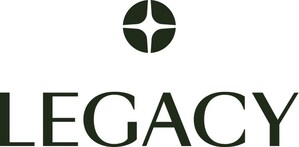Study findings add to prior research demonstrating that graphic health warning labels can prevent smoking and encourage cessation in young adults
WASHINGTON, Nov. 20, 2013 /PRNewswire-USNewswire/ -- A new study led by the Schroeder Institute for Tobacco Research and Policy Studies at Legacy® and supported by the National Institute on Drug Abuse (NIDA), National Institutes of Health (NIH), and the Food and Drug Administration (FDA) provides further evidence that implementation of graphic health warning labels in the U.S. would likely result in a public health benefit, especially among young people. The study, published in Nicotine and Tobacco Research, supports previous findings that graphic health warning labels play an important role in preventing smoking and encouraging cessation in young adults.
(Logo: http://photos.prnewswire.com/prnh/20101101/DC86294LOGO)
The 2009 Family Smoking Prevention and Tobacco Control Act required the FDA to include new warning labels on cigarette packages and in cigarette advertisements. In 2011, FDA published a final rule requiring graphic health warning labels to accompany nine new text warning statements. The implementation of these particular warnings was stalled by a lawsuit brought by tobacco companies. In August 2012, a U.S. Court of Appeals held that the specific graphic warning labels FDA had developed violated the First amendment in part because the FDA had failed to produce evidence showing that they would reduce the number of Americans who smoke.
This study is the first to examine the perceived effectiveness of graphic warning labels in a national sample of U.S. young adults. It used data from the Legacy Young Adult Cohort Study to assess the potential impact of graphic health warning labels on smoking intentions among 4,196 cigarette smokers and non-smokers ages 18-34. Findings include:
- 53 percent of the young adults said that graphic labels would make them think about not smoking, including 40 percent of current smokers and 56 percent of non-smokers.
- More than 10 percent of current smokers and more than 23 percent of nonsmokers said that warning labels led them to decide to not have a cigarette.
These results are consistent with other studies that suggest that graphic health warning labels could reduce long-term smoking-related harms in the United States by influencing smoking behavior of young adults. Previous research shows that both youth and adults are more likely to recall larger warnings, rate larger warnings as having a greater impact, and equate the size of the warning with the magnitude of the risk. Studies from other countries with established graphic health warning labels have revealed that the labels have resulted in fewer smokers, increased quit attempts, and reduced relapse among ex-smokers.
Intervening early with young adults is critical and new graphic cigarette warning labels may provide a means to help with both smoking prevention and cessation in this age group. Tobacco remains the number one cause of preventable death and 400,000 people die each year from tobacco-related diseases. Legacy has supported the addition of graphic warning labels as a vital means to help young people make a more informed decision about smoking and to motivate current smokers to quit for good. Graphic health warning labels are a key mandate in the Family Smoking Prevention and Tobacco Control Act to save Americans from the deadly ravages of tobacco.
The full study is available here.
LEGACY
Legacy helps people live longer, healthier lives by building a world where young people reject tobacco and anyone can quit. Legacy's proven-effective and nationally recognized public education programs include truth®, the national youth smoking prevention campaign that has been cited as contributing to significant declines in youth smoking; EX®, an innovative public health program designed to speak to smokers in their own language and change the way they approach quitting; and research initiatives exploring the causes, consequences and approaches to reducing tobacco use. Located in Washington, D.C., the foundation was created as a result of the November 1998 Master Settlement Agreement (MSA) reached between attorneys general from 46 states, five U.S. territories and the tobacco industry. To learn more about Legacy's life-saving programs, visit LegacyForHealth.org.
Follow us on Twitter @legacyforhealth and Facebook www.Facebook.com/Legacy.
SOURCE Legacy
WANT YOUR COMPANY'S NEWS FEATURED ON PRNEWSWIRE.COM?
Newsrooms &
Influencers
Digital Media
Outlets
Journalists
Opted In





Share this article